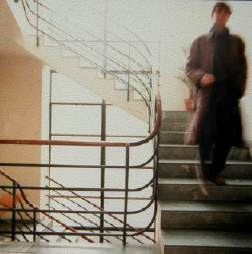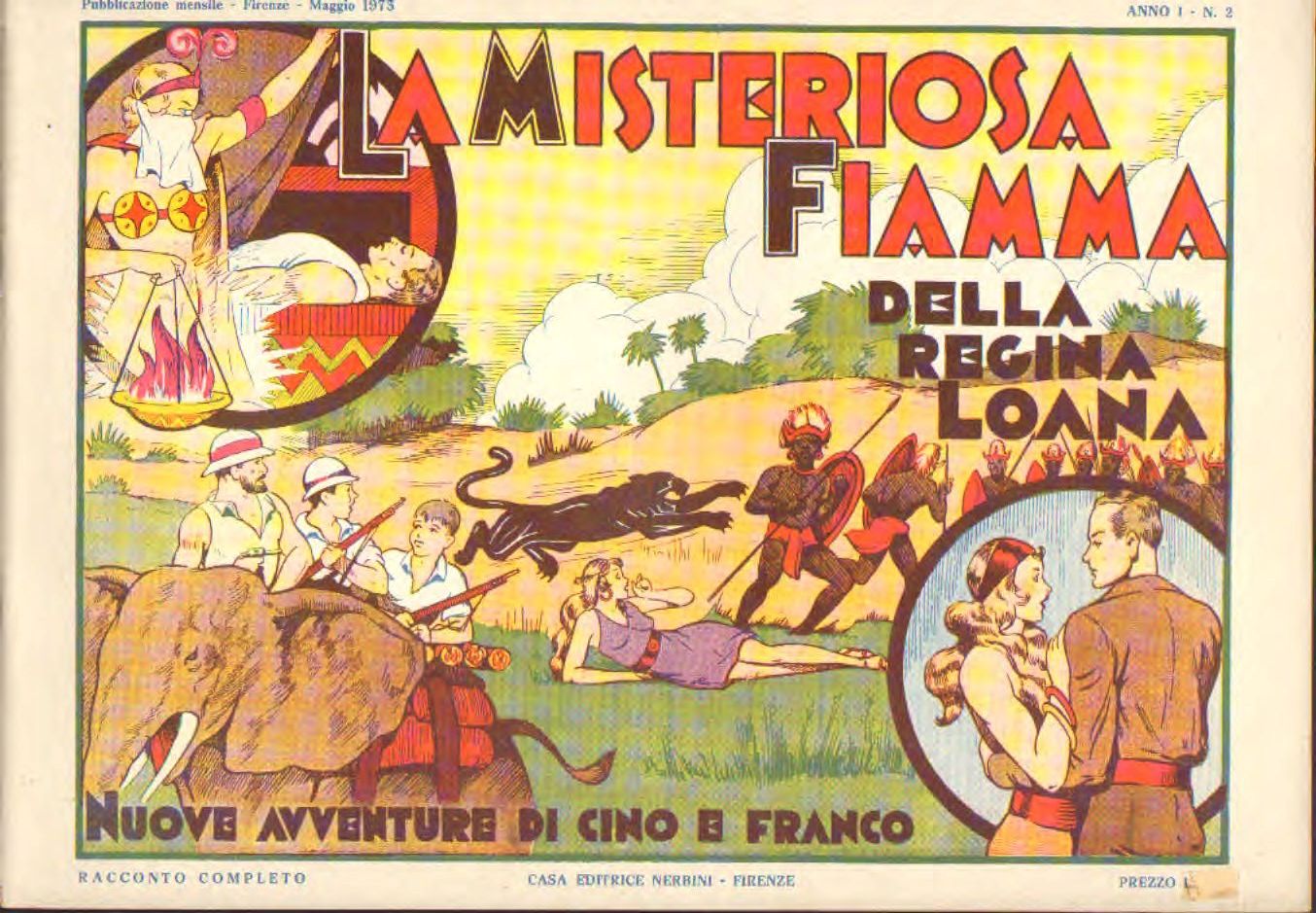Il posto da gigante in questo libro, lo svolgono i fumetti. Fumetti di cui Eco è stato, forse con Oreste del Buono, il più grande sdoganatore in Italia. Quando lui, nato nel 1932 alla metà degli anni sessanta li sdoganava, io, nato nel 1955, li leggevo. Ma ecco il problema, o meglio la crisi. E' uscito alcune settimane fa un nuovo episodio del mio fumetto preferito. Siamo nel 2014, come spiegare a me stesso e forse anche a qualche amico, questo intenso interesse, il grande piacere di questo arrivo?
Possiamo certo intrecciare la chiave culturale (gli strumenti del fumetto sono condivisi con altri più nobili media .. il racconto, l'illustrazione, il cinema, la fotografia ) oppure il dato sociale (in Italia quasi ce ne si vergogna un poco a leggerli, mentre all'estero e, in Francia in particolare, fa comunque fico.. e da decenni) oppure vedere la cosa dal punto di vista puramente edonistico .. (mi fa piacere e basta), oppure un poco come faceva Cedric (lo faccio "io" da eccentrico e quindi tu, condividendo, appartieni allo stesso club d'elite, per esempio cigaro e cynar).
Ma nessuna di queste interpretazioni mi piace e ne cerco un'altra.
Che è: questa di leggere Blake&Mortimer a me ricorda quello che io ero e quello che io sognavo, mi ricorda come ero nella pre adolescenza. Ma il punto non è la memoria nostalgica, è il contrario: è la volontà di tenere accesso il layer di quello che ero da bambino o ragazzo. Non voglio abbandonare quello che volevo essere, e quello che amavo. Che bruttezza tradire i nostri sogni, i nostri desideri le nostre speranze di giovani.
Non v'è nulla di infantile nel mio amore per Blake&Mortimer, nulla di colto, nulla di edonistico ma il piacere intenso di continuare almeno un poco a vivere quella fase e continuare ad accettare la sfida dei nostri sogni e speranze anche nella vita adulta. Mica facile ma Blake&Mortimer mi sfidano.
E andiamo per ordine allora. Ho scoperto Blake Mortimer all'eta di 12 anni. Uscivo da una esperienza strana in un barbiere di Marina di Grosseto. Me ne ricordo bene, il barbiere (non so nei luoghi di mare era forse comune .. c'era stato da poco il caso di Ermanno Livorini a Viareggio) mi aggiustva continuamente l'asciugamano tra le gambe... La cosa era imbarazzante, ma come tutti i bambini non capivo bene le implicazioni, era solo fastidioso. Girai l'angolo ed entrai in un negozio di giornalaio. me lo ricordo come uno dei posti "assoluti". Nel negozio di giornalaio, su uno scaffale c'erano loro, I Classici dell'Audacia... nuovi. E in copertina il professor Mortimer con una lanterna in una tomba egizia. Costava 250 lire, una cifretta.. forse quasi il triplo del Corriere dei Piccoli, ma il fascicolo emanava un'aura adulta, era bellissimo, con carta lucida e patinata. Lo comprai e poi comprai altri fascicoli che erano lì: capii dopo un poco che erano giacenze... perché il fascicolo era di due o tre anni prima...
Cominciai a sviluppare un grande interesse per i giornalai, per qualunque giornalaio. Ne ero sempre attratto per vedere se vi erano giacenze di altri fascicolo di Classici dell'Audacia che non avevo, ma ero comunque interessato di per sé. Il giornalaio mi sembrava (e ancora mi sembra) un luogo delle meraviglie in cui si ha uno sguardo caleidoscopico sul mondo e come sempre cerco di convincere altri.. ma non ho nessun amico con cui sono mai riuscito a condividere questa passione.
Finite le vacanze estive tornai a Roma con uno straordinario, incredibile strumento. Una bicicletta Bianchi 26 rossa con il cambio. Uno strumento di libertà inaudito, inaudito. Prima, arrivato nell'inverno dalla Sicilia a Roma avevo organizzato con i miei amichetti undicenni gite a piedi a conoscere la città. All'Appia antica, a Piazza San silvestro... ma adesso con la bicicletta ero una sorta di Cristoforo Colombo, una cosa magnifica. Ancora strabiliato vedo i miei studenti arrivare in autobus e mi domando... ma come e la bicicletta? Ma lasciamo stare. Mia moglie ai nostri, dice eh si allora non c'era traffico. Un errore, Roma era un caos peggio di adesso.
Ma torniamo a noi, scorrazzando in bicicletta scoprii un altro luogo assolutamente mitico meraviglioso, incredibile. Una specie di antro delle meraviglie: era un carrettino di legno veramente piccolo che però aprendosi si allargava un poco che stava sotto le mura di San Giovanni. il baracchino gestito da una signora "giusta", né svenevole né arcigna, conteneva giornali, riviste, libri e fumetti usati! Fumetti usati, fumetti usati! una cosa da non credere.
Andandoci ogni sera alle 18:30 in bicicletta andavo a vedere se esistevano altri Classici dell'Audacia. E ogni tanto ne trovavo uno o due.. a cento lire. E a volte, incredibile incredibile anche cinque o sei..! Un tuffo al cuore. Così giorno dopo giorno completai la collezione di tutti i Classici dell'Audacia (che nel frattempo erano usciti di produzione). E di Blake&Mortimer lessi altre storie in particolare il famosi Marchio giallo e cercai di fare proseliti prestandogli agli amici che si appassionarono. Ma il primo fumetto della serie non usci mai in Italia.. era un mappattone di 200 pagine. Lo scoprii in francese solo moltissimi anni dopo, forse nel 1973, lo comprai e pensate un poco leggendolo in francese lo traducevo oralmente in italiano in un registratore cosicché il mio amico appassionato usando le cassette aveva un audio libro eravamo ormai nel 1973 credo.
Tutta questa cosa di Blake&Mortimer è rimasta un poco sopita per un cinque lustri sino a che miracolo dei miracoli usci nel 1996 un nuovo album.. Come un nuovo albm? L'autore era morto nel 1987. Ma invece ci fu una ripresa della serie! Ora mentre di norma queste riprese come dei film dei libri eccetera fanno schifo e uno pensa sempre ah l'originale..! la ripresa della serie di Blake&Mortimer è una vera e propria meraviglia per noi appassionati. Le storie sono bellissime, i disegni accurati in stile Jacob, l'edizione classica. il tutto è fatto ad un equipe a rotazione tanto che ogni anno o due ce la fanno a far uscire un nuovo album.
L'ultimo appunto è addirittura una sora di antefatto rispetto al mammarozzone "Il segreto dell'Espadon" spiega cosa era avvenuto prima.
Ogni tanto vorrei vedere i quadri di Van Giogh dopo che è morto, o le architetture di Giuseppe dopo che è morto sulle scale, o penso ad un seguito mai fatto di Amerzone, o chissà a cose di questo genere che però non succedono mai. Invece nel caso di Blake&Mortimer il miracolo è avvenuto: è ricominciato, è ricominciato ed è meglio di prima.
Questa ripresa è una delle cose belle della vita: fa pensare che esiste un progresso, che esiste un futuro che il nostro desiderio e sogno volontà di bambini non sempre viene tradito ma che un poco vale scommetterci. Con questo entuasiamo ho ripreso il mamarottone "Il secreto dell'Espadon" per rileggerlo. Ma alla decina pagina mi sono mezzo bloccato. Ok, Nino ok, basta infanzia adesso, hai delle responsabilità ora, devi scrivere di cose importanti, motivare i ragazzi laureandi e dottorandi, lavorare con i giovani di nITro, vivere il lavoro universitario insomma .... abbiamo capito, ma ora torna in te.





